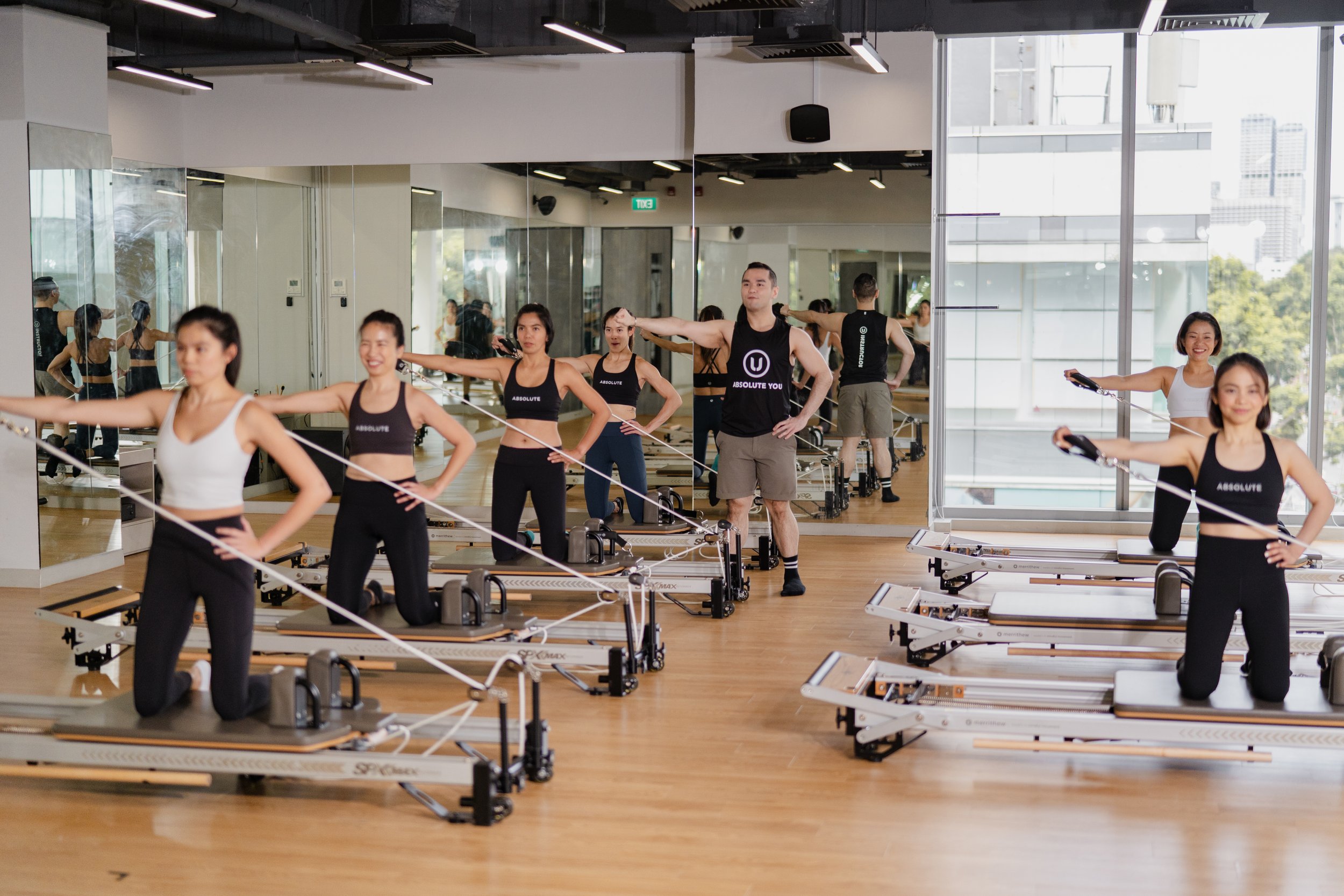‘Pilates is just stretching’, now is it really?
As life gets busier and stress levels rise, finding a form of exercise that not only keeps us physically fit but also promotes mental well-being becomes paramount. Enter Pilates – a unique exercise system that has gained immense popularity in recent years. Combining strength, flexibility, and mindful movement, Pilates offers a multitude of benefits that extend far beyond the physical realm. In this blog post, we will delve into the extraordinary advantages of Pilates and explore why it has become a transformative practice for countless individuals.
Building Core Strength: One of the key foundations of Pilates lies in developing a strong core. The core muscles encompass the deep abdominal muscles, back muscles, and pelvic floor, which play a crucial role in maintaining stability and alignment. By practicing Pilates, you engage and strengthen these muscles, leading to improved posture, increased stability, and enhanced overall strength.
Pilates focuses on activating the deep core muscles, such as the transverse abdominis, using precise movements and breath control. According to a study published in the Journal of Orthopaedic & Sports Physical Therapy, regular Pilates practice was found to significantly increase core muscle endurance and strength, leading to enhanced athletic performance and reduced risk of injuries (Ref. 1).
Enhancing Flexibility and Joint Mobility: Flexibility is a fundamental component of physical fitness and is often overlooked in traditional exercise routines. Pilates, however, places a strong emphasis on improving flexibility and joint mobility through controlled and dynamic movements.
During a Pilates session, you work through a full range of motion, stretching and lengthening your muscles while maintaining proper alignment. This results in increased flexibility, improved joint mobility, and a reduced risk of muscle imbalances and injuries. A study published in the Journal of Physical Therapy Science found that participants who underwent 12 weeks of Pilates training experienced significant improvements in hamstring flexibility and hip joint mobility (Ref. 2).
Mind-Body Connection: In the hustle and bustle of daily life, it's easy to lose touch with our bodies and neglect the signals they send us. Pilates offers a space to reconnect with ourselves by promoting a strong mind-body connection. By focusing on precise movements, breath control, and mindful awareness, Pilates encourages us to be fully present in the moment and develop a deeper understanding of our bodies.
According to research published in Complementary Therapies in Medicine, Pilates practice has been shown to increase body awareness, mindfulness, and the ability to concentrate (Ref. 3). This heightened sense of awareness carries over into our daily lives, helping us make healthier choices and manage stress more effectively.
Improved Posture and Alignment: Modern lifestyles often involve prolonged sitting, which can lead to poor posture and musculoskeletal imbalances. Pilates, with its emphasis on core strength and alignment, can be a powerful antidote to these issues.
Through various exercises targeting the muscles responsible for good posture, Pilates helps to realign the spine and improve overall postural alignment. A study published in the Journal of Physical Therapy Science found that Pilates training significantly improved posture and reduced musculoskeletal pain in sedentary office workers (Ref. 4).
Pilates is a holistic exercise method that offers numerous benefits for both the body and mind. From building core strength and enhancing flexibility to fostering a strong mind-body connection and improving posture, Pilates has the power to transform lives. By incorporating Pilates into your fitness routine, you can embark on a journey of self-discovery and well-being. So why not try it today? At Absolute, we are offering a trial for members, 3 classes for only $59* - available here.
*valid for new members only. Terms & conditions apply.
References:
Levine B, Kaplanek B, Scafura D, et al. The effects of Pilates exercises on selected physiological components of fitness. J Orthop Sports Phys Ther. 2009 Mar;39(3):172-84. doi: 10.2519/jospt.2009.2917.
Kloubec JA. Pilates for improvement of muscle endurance, flexibility, balance, and posture. J Strength Cond Res. 2010 Oct;24(10):661-7. doi: 10.1519/JSC.0b013e3181b3e79e.
Nambi GS, Inbasekaran D, Khuman R, et al. Changes in pain intensity and health related quality of life with Iyengar yoga in nonspecific chronic low back pain: a randomized controlled study. Complement Ther Med. 2014 Aug;22(4):731-8. doi: 10.1016/j.ctim.2014.06.001.
Park SM, Lee NK, Kwon OY. The effects of pilates on static balance and pain in women university students. J Phys Ther Sci. 2015 Oct;27(10):3217-21. doi: 10.1589/jpts.27.3217.
